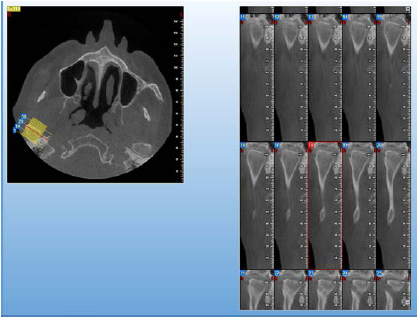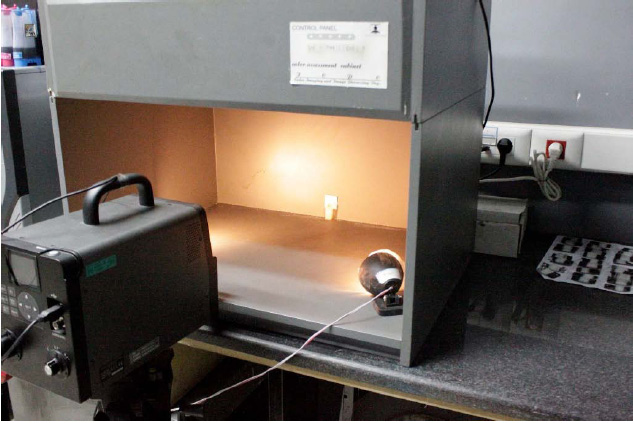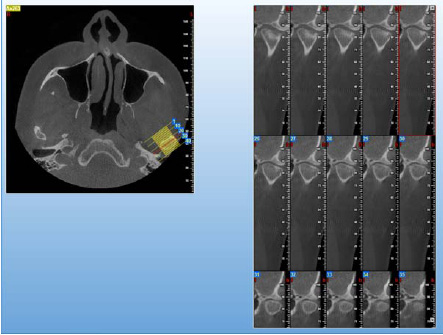Department of Dairy Microbiology, College of Dairy Science, Kamdhenu University, Amreli, Gujarat, India
Corresponding author Email: vimalmramani@gmail.com
Article Publishing History
Received: 16/04/2018
Accepted After Revision: 15/05/2018
Milk is important source of nutrient required for the growth human. It is very common to adulterate the milk in supplying chain by the local vendors. This present study is try to explain the hygienic status of milk in Amreli district. Total 100 milk samples were collected from the different region of Amreli district and checked for the presence of urea, detergent, neutralizer and hydrogen peroxide. All the samples were assess by our newly developed nanotechnology based dipstick and REIL EMAT plus for comparative purpose. Later on statistical analysis was also carried out from the obtained result data. Out of 100 collected milk sample, the extent of adulteration is varying from hydrogen peroxide (0 %) to urea (12 %). Due to the malpractice in milk, consumer must aware of this malpractice and they have to be more active and aggressive against the milk adulteration.
Amreli District, Hygienic Status, Milk Adulteration, Public Health
Kabariya R. B, Ramani V. M. Quality Assessment of Milk Samples of Amreli Region with Nanotechnology Based Dipstick and Other Known Technology: A Comparative Study. Biosc.Biotech.Res.Comm. 2018;11(2).
Kabariya R. B, Ramani V. M. Quality Assessment of Milk Samples of Amreli Region with Nanotechnology Based Dipstick and Other Known Technology: A Comparative Study. Biosc.Biotech.Res.Comm. 2018;11(2). Available from: https://bit.ly/2NlEg1I
Introduction
Milk is an important source of nutrient required for growth in infants and children and for maintenance of health in adults. Milk is a perfect food, readily digested and absorbed. It is a sole natural food for infants and children. Milk contains more than 100 substances that are either in solution suspension or emulsion in water, the important being casein – the major protein of milk, lactose – milk sugar, whey and mineral salts. From past few year with the increase of living standard of people and advance technology, there is significantly increased in milk and milk product consumption. Though it is very common in dairy industry to adulterating milk and other dairy product for the cost-cutting purpose or increase the life of dairy product. Addition of such adulterant in milk decrease the nutrient value, its quality and flavor and may also cause harm full effect on human health, Karukonda et al. (2017) and Brindha et al. (2017).
According to the report of Food Safety Standard Authority of India (FSSAI, 2016), in India about 68.4% of milk is adulterated with different adulterants. The common adulterants which can be mixed with milk are starch, urea, hydrogen peroxide, boric acid, detergent, neutralizer, and maltodextrin and ammonium sulphate. These all adulterants mixed with milk for the cost cutting purpose. Consumption of adulterated milk can cause the several health hazardous in both infant and in adult, sometimes it can prove to be fetal, (Makadiya and Pandey 2015).
We have developed innovative method for the instant detection of adulterants in milk. Our developed technique is nanotechnology based dipstick which is quite reliable, portable, instantaneous, cheap, require very low amount of milk sample for the testing. Apart from this, nanotechnology based dipstick can be used at house hold level and it doesn’t require any skilled person to handle it. Presence or absence of particular adulterant in milk sample can be detect within second by this dipstick. We have developed total eight individual dipstick for the instant detection of starch, urea, hydrogen peroxide, detergent, neutralizer, maltodextrin and ammonium sulphate.
Unique Selling Point (USP) of our newly developed dipstick is ease of use and instantaneous result. These both the property are very useful for common man to utilize this dipstick for detection of adulterants at house hold level as well as at village cooperative also which is the first entry point of milk collection chain. This dipstick is very simple in which detector pad is adhere at the lower end and reference color tag is adhere at the middle of dipstick. Detector pad of dipstick is dip into milk and if color of detector pad is changed as same as reference color tag, the presence of particular adulterants is confirm.
Public consume fluid milk which has been adulterated and diluted to an extent that there is very little nutritive value left in it resulting to a great extent to general public health concerns and malnutrition Quasid, et al. (2007). Keeping in view the above facts, the present study was conducted to achieve the following objectives: To determine the chemical composition of the milk available in local market. To check the hygienic status of market milk. To detect various adulterants in market milk following the method of Rajesh et al. (2016).
In this article we have try to explore the comparative analysis between our newly developed nanotechnology based dipstick and standard instrument based technique. We have compare our result with REIL EMAT PLUS (Milk adulteration testing instrument) developed and patented by CSIR & CEERI technology, India. REIL EMAT PLUS is able to detect the presence of hydrogen peroxide, neutralizer, detergent and urea. In this article we have compare our newly developed nanotechnology based dipstick with REIL EMET plus for the detection of hydrogen peroxide, neutralizer, detergent and urea. Generated data from the result were analyzed to check the specificity, accuracy and sensitivity of dipstick compare to REIL EMAT plus and statistical analysis was carried out with help of Medcalc software.
 |
Figure 1: Innovative nanotechnology based dipstick |
 |
Figure 2: REIL EMAT plus standard milk adulteration testing instrument |
Material and Methods
A total 100 of milk samples were collected from different talukas viz. Babra, Liliya, Dhari, Savar Kundla, Rajula and Bagasara of Amreli district and were preserved at – 4°C temperature in refrigerators. The samples were collected in 100 ml screw capped sterilized plastic bottles. All the possible precautions were taken to avoid external contamination at the time of collection of samples and during processing Baharullah, et al. (2013). Milk samples were collected in clean, dry and neatly labelled sample containers and transported to laboratory in cold chain. The milk samples were tested for the following adulterants urea, neutralizers (NaHCO3, Na2CO3, NaOH, etc.), detergents, hydrogen peroxide, (Singuluri and Sukumaran 2014).
Collected milk samples were analyzed for the presence or absence of different milk adulterant from group of hydrogen peroxide, neutralizer, urea and detergent. First our developed nanotechnology based dipstick were dipped into the milk sample and check for the presence/absence of adulterants and then same milk sample was analyzed with help of REIL EMAT plus and compare. Later statistical analysis was carried out to check the specificity, accuracy and sensitivity. In statistical analysis, the comparison of sensitivity, specificity and accuracy of dipstick were compared with standard instrument by using Medcalc software version 13.1 and Medcalc software was basically worked upon the Wilson intervals method.
Results and Discussion
All these hundred samples were analyzed for the presence of adulterants with the help of our innovative nanotechnology based dipstick and REIL EMAT plus standard milk adulteration testing instrument. The color of all milk samples were observed creamy white in appearance, texture of milk samples were smooth and oily and odour of milk samples were characteristics pleasant and milky.
Collected sample were analyzed to check the presence/absence of different adulterant from group of hydrogen peroxide, neutralizer, urea and detergent. Out of 100 collected milk samples, 28 sample were found to be adulterated with different milk adulterant from the group of hydrogen peroxide, detergent, neutralizer and urea. While checking the presence or absence of adulterants by our innovative dipstick, it was found that 12%, 8% and 8% out of 100 milk samples have been adulterated with urea, detergent and neutralizer respectively. While no sample was found to be adulterated with hydrogen peroxide. Again same milk sample was analyzed by standard milk adulteration testing instrument REIL EMAT plus and same result was found which was found by our innovative dipstick. Table- 1indicate the data of positive and negative adulteration detection in milk collected sample from the Amreli region. Figure 3 shows the percentage wise presence or absence of different adulterants in milk samples.
| Table 1: Shows the total number of positive and negative different adulterant in milk sample | ||||
| Sr. No | Name of Adulterants | Number of collected samples | Positive | Negative |
| 1 | Urea | 100 | 12 | 88 |
| 2 | Detergent | 100 | 8 | 92 |
| 3 | Neutralizer | 100 | 8 | 92 |
| 4 | Hydrogen peroxide | 100 | 0 | 100 |
Fig.3 shows that 12 %, 8 %, 8 % milk was found to be adulterated with urea, detergent and neutralizer respectively while no sample was adulterated with hydrogen peroxide.
 |
Figure 3: Adulterants profile in milk |
Urea added with milk to increase the witness of milk, increase consistency and also for the balancing of content of Solid-Non-fat (SNF) as present in natural milk. Result obtain from comparative analysis of our study, 12 % of milk sample were found to be adulterated with urea while result obtain by Singuluri and Sukumaran (2014) was 60%. Our result is comparatively lower than them. The mixing of urea in milk lead to the overload the function of kidney as they have to filter out more amount of urea from the body. This may lead to the renal failure and impaired vision. Apart from this, urea may also disturb the function of liver and heart.
Another most widely used milk adulterant is detergent. It is used to emulsify and dissolve the oil in water and giving frothy solution, the characteristic white color of milk. Result obtained from the above comparative study, 8 % milk sample were shown positive for detergent. Our result is lower compare to result obtained by Swetha et al. (2014). In their result 14 % milk sample were found to be adulterated with detergent. Addition of detergent in milk can cause the gastrointestinal complication. The two major component of detergent, octylphenol and nonylphenol can cause the breast cancer and also decrease the sperm production from testis.
Hydrogen peroxide is added in milk for the long term preservation and freshness of milk. Result obtained from our comparative study, no single milk sample was adulterated with hydrogen peroxide while result obtained by Singuluri and Sukumaran (2014) 32 % milk sample were shown positive for the hydrogen peroxide. Our result is opposite then them. Long term consumption of hydrogen peroxide can damages the cells of gastro intestinal track which can ultimately cause the gastritis and inflammation of the intestine. Neutralizer added in milk can help to neutralize the acidity developed in milk. Consumption of neutralizer containing milk can disturb the hormonal signaling. Result obtained from our comparative, 8 % of milk sample shows the positive test for the presence of neutralizer in milk. Brindha et al. (2017) also did same analysis and they got 20 % of the milk sample shows the positive result for neutralizer. Our result is lower than them.
Medcalc software was performed using ROC (Receiver Operating Characteristic) curve analysis and AUC (Area Under curves) analysis. A ROC curve shows the sensitivity and specificity whereas Area Under curve (AUC) shows an index of accuracy. The ROC curve has been prepared by using Medcalc software for four different adulterant. If the value of AUC is 1 or closer to 1 then dipstick has same accuracy compare to standard compared instrument. Four different adulterants, i.e. hydrogen peroxide, neutralizer, urea and detergent with standard instrument REIL EMAT plus. After statistical analysis and based on ROC curve, AUC value of these four adulterant were found 1.0 while 95% confidence interval (CI) was 0.996 to 1.0. If the value of AUC was 1 or closer to 1 then dipstick have same accuracy compare to standard instrument. ROC curve indicate the 100% specificity and sensitivity. Hence, our nanotechnology based dipstick is excellent as compared to standard instrument (REIL EMAT plus).
Conclusion
In a country such as India where milk and milk products play an important role in different foodstuffs, this analysis carried out should bring about more awareness to the general public about the malpractices in milk marketing. On the basis of data obtain from the above result it is conclude that quality of milk sample is not as per the standard and milk adulteration is still in practice. Consumption of lower quality milk may lead to serious human health problems. To eradicate this malpractice by local wanders which is deep rooted in the cities more than rural areas, steps should be taken from the door steps of local consumers. The consumers must be more active against milk adulteration going on in whole country. It is important to have a quality control system that regularly check and ensure that only good quality milk is sold. The consumers and the milk sellers combined effort will help to decrease the adulteration practice.
References
Baharullah, K., Muhammad, N.A., Abdul, S., Taiseer, ULI., Qaiser, J., Shahzad, M. (2013). Biochemical and Bacteriological Analysis of Cows’ Milk Samples Collected from District Peshawar. International Journal of Pharmaceutical Science Review and Research Vol. 21 No. 2: pages 221-223.
Brindha, N., Chitra, P., Janarthanan, R., and Murali, A. (2017). A Study on Detection of Adulteration in Milk Samples from Different Regions of Thuraiyur District in Tamil Nadu.
International Journal of Current Microbiology and Applied. Science Vol. 6 No. 12: Pages 3303-3310.
Karukonda R., Ramanujam S.A., Sukumaran. M.K. (2017) Qualitative Detection of Some Adulterants in Milk Samples Supplied in the Twin Cities of Secunderabad and Hyderabad, Telangana Journal of Medical Science and Clinical Research Vol. 5 No. 8: Pages 26242-26250.
Makadiya, J., and Pandey, A. (2015). Quality Assessment and Detection of Adulteration in Buffalo Milk Collected From Different Areas of Gandhinagar by Physico-Chemical Method. International Journal of Pharmtech Research Vol. 8 No. 4: Pages 602-607.
Quasid, A., Mohammad, A., Mohammad, A., Ihsan, M.Q., and Iftikhar, A.K. (2007). Composition and Adulteration Analysis of milk samples. Sarhad Journal of Agriculture Vol. 23 No. 4 1127-1130.
Rajesh P.A., Hindustan, A.A., P. Sreekeerthi, P., Jyoshna, M., Alekhya, T., Arun K. (2016). A comparative study on the physicochemical properties, composition and extent of adulterants present in raw milk International Journal of Pharmacy and natural Medicine Vol. 4 No. 10: pages10-14.
Singuluri, H., and Sukumaran, M. K. (2014). Milk Adulteration in Hyderabad, India – A Comparative Study on the Levels of Different Adulterants Present in Milk Journal of Chromatograph Separation. Technol. Vol 5 No. 1: Pages 1-3.
Swetha C.S, Sukumar B. and Sudhanthirakodi S. (2014). The Study on Detection of Adulteration in Milk Samples Supplied by Local Vendors in Tirupathi Region, India Shanlax International Journal of Veterinary Science Vol 2 No 2: Pages 4-11.


